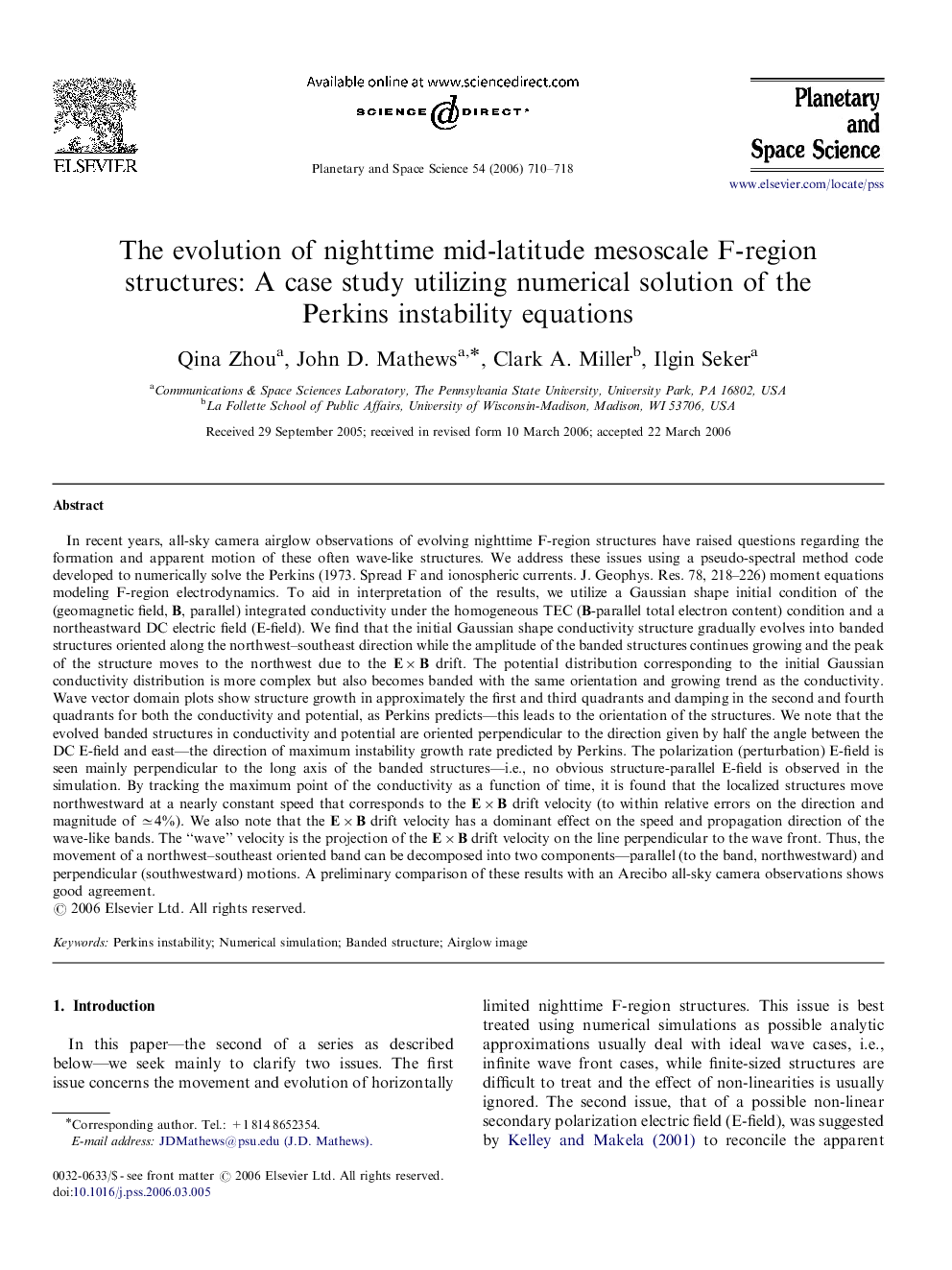| کد مقاله | کد نشریه | سال انتشار | مقاله انگلیسی | نسخه تمام متن |
|---|---|---|---|---|
| 1782840 | 1022365 | 2006 | 9 صفحه PDF | دانلود رایگان |

In recent years, all-sky camera airglow observations of evolving nighttime F-region structures have raised questions regarding the formation and apparent motion of these often wave-like structures. We address these issues using a pseudo-spectral method code developed to numerically solve the Perkins (1973. Spread F and ionospheric currents. J. Geophys. Res. 78, 218–226) moment equations modeling F-region electrodynamics. To aid in interpretation of the results, we utilize a Gaussian shape initial condition of the (geomagnetic field, B, parallel) integrated conductivity under the homogeneous TEC (B-parallel total electron content) condition and a northeastward DC electric field (E-field). We find that the initial Gaussian shape conductivity structure gradually evolves into banded structures oriented along the northwest–southeast direction while the amplitude of the banded structures continues growing and the peak of the structure moves to the northwest due to the E×B drift. The potential distribution corresponding to the initial Gaussian conductivity distribution is more complex but also becomes banded with the same orientation and growing trend as the conductivity. Wave vector domain plots show structure growth in approximately the first and third quadrants and damping in the second and fourth quadrants for both the conductivity and potential, as Perkins predicts—this leads to the orientation of the structures. We note that the evolved banded structures in conductivity and potential are oriented perpendicular to the direction given by half the angle between the DC E-field and east—the direction of maximum instability growth rate predicted by Perkins. The polarization (perturbation) E-field is seen mainly perpendicular to the long axis of the banded structures—i.e., no obvious structure-parallel E-field is observed in the simulation. By tracking the maximum point of the conductivity as a function of time, it is found that the localized structures move northwestward at a nearly constant speed that corresponds to the E×B drift velocity (to within relative errors on the direction and magnitude of ≃4%). We also note that the E×B drift velocity has a dominant effect on the speed and propagation direction of the wave-like bands. The “wave” velocity is the projection of the E×B drift velocity on the line perpendicular to the wave front. Thus, the movement of a northwest–southeast oriented band can be decomposed into two components—parallel (to the band, northwestward) and perpendicular (southwestward) motions. A preliminary comparison of these results with an Arecibo all-sky camera observations shows good agreement.
Journal: Planetary and Space Science - Volume 54, Issue 7, July 2006, Pages 710–718